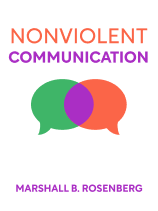

This article is an excerpt from the Shortform book guide to "Nonviolent Communication" by Marshall B. Rosenberg. Shortform has the world's best summaries and analyses of books you should be reading.
Like this article? Sign up for a free trial here .
What is NVC communication? What are the core tenets of Marshall Rosenberg’s nonviolent communication approach?
Nonviolent Communication (NVC) is a framework for interacting with other people and ourselves with empathy and compassion. The author, Marshall B. Rosenberg, was drawn to the idea of encouraging compassion after witnessing the deadly 1943 Detroit race riots as a child.
Read about Marshall Rosenberg’s NVC communication framework and how to apply in practice.
What Is NVC Communication?
The purpose of NVC communication is to foster authentic connections with ourselves and others. These connections have to start with compassion, which NVC naturally creates. You can use NVC in almost any relationship or environment, including in families, schools, governments, businesses, and personal relationships.
NVC is about communicating, but it is also a framework for attention. In communicating, we often fixate on unhelpful things (like judgment and defensiveness), but these behaviors won’t get us what we need and want out of the conversation. Nonviolent Communication helps us refocus on what will.
In this context, the words “violent” and “nonviolent” don’t just refer to physical conflict. Any communication that causes pain or harm to anyone (including ourselves) is “violent,” while any communication that stems from true compassion is “nonviolent.” On a philosophical level, the core idea of NVC is to keep your attention focused on a sense of common humanity when you communicate (instead of getting distracted by strong emotions) because that human connection keeps you grounded in compassion.
For example, imagine someone has just insulted you. If you focus on your anger, you’re likely to communicate violently by hurling an insult right back. But if you focus on the feelings and needs you have in common, you might recognize that insulting you was this person’s way of expressing their insecurity and their need for self-esteem. Keeping your attention on that common humanity allows you to tap into empathy (since we’ve all felt insecure at some point), and empathy makes it easier to respond with compassion.
This doesn’t mean you can’t feel strong emotions in NVC—feelings are a core component of this framework—it just means that you don’t allow those strong feelings to stop you from communicating in a compassionate way. That way, you can communicate with anyone, even people you have serious disagreements with, without compromising your values around how human beings should be treated.
For any communication to be truly nonviolent, it has to come from a place of compassion, not from a desire to make another person do what you want them to do. Paradoxically, when done well, NVC has a much higher chance of resulting in a satisfying outcome for everyone. In other words, to get what you want, you have to forget what you want and focus instead on the other person’s humanity.

———End of Preview———
Like what you just read? Read the rest of the world's best book summary and analysis of Marshall B. Rosenberg's "Nonviolent Communication" at Shortform .
Here's what you'll find in our full Nonviolent Communication summary :
- How nonviolent communication lets you have more compassion for yourself
- Why nonviolent communication is the key to fostering authentic connections with others
- The 4 steps to expressing yourself with empathy towards others






